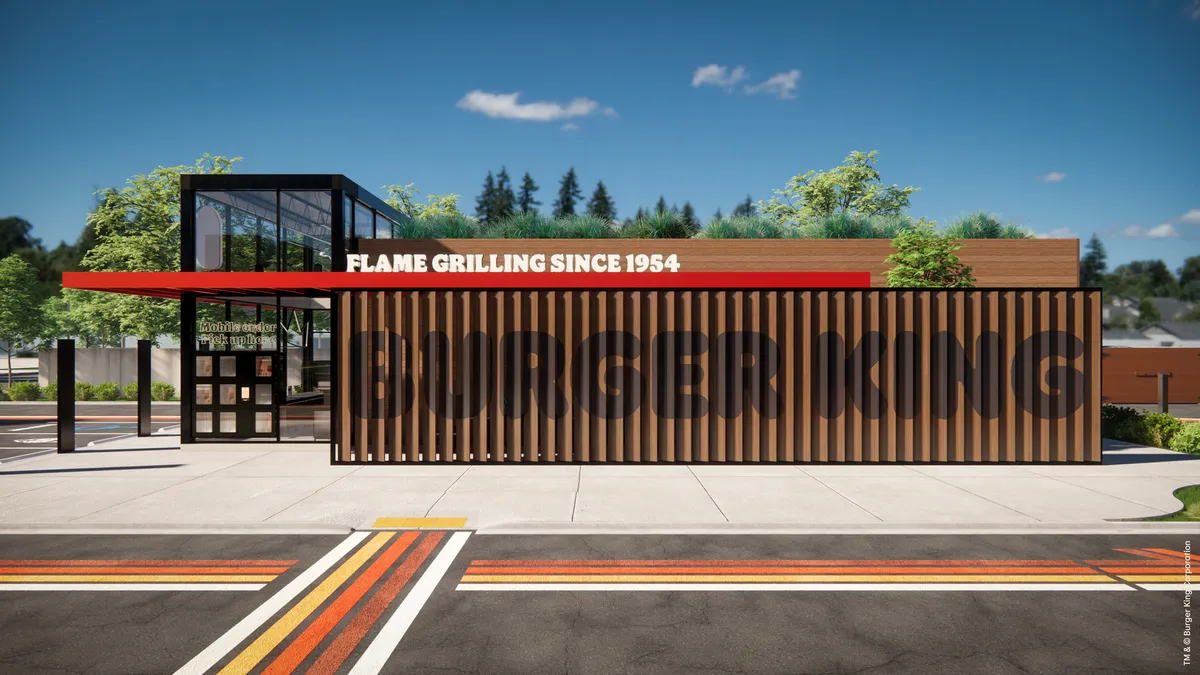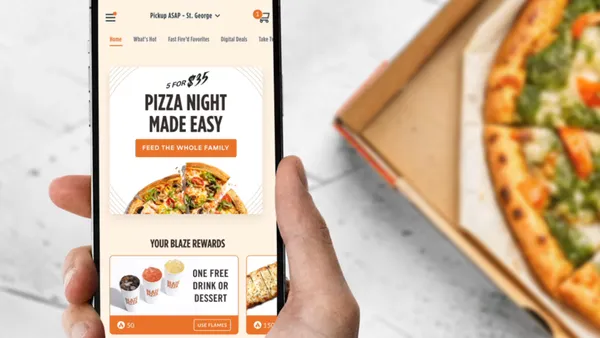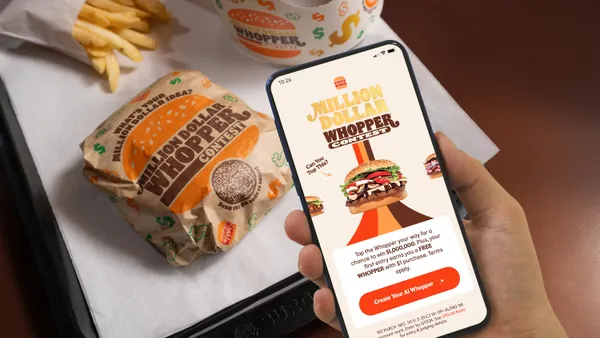Dive Brief:
- Burger King’s U.S. store profitability is down from 2019 and down from historic peaks, said Patrick Doyle, Restaurant Brands International executive chairman, during the company's Q4 2022 earnings call on Tuesday.
- The chain’s restaurant-level EBITDA was about $140,000 in 2022, and Burger King is targeting restaurant-level EBIDTA of $175,000 for franchisees by 2024, he said.
- Burger King’s franchisee profitability rose 40% during Q4, but this year could still be difficult for operators, COO and incoming CEO Joshua Kobza, said. In January, Toms King, a 90-unit franchisee, entered bankruptcy.
Dive Insight:
Burger King has signed a spending agreement with 96% of U.S. franchisees stipulating that if the brand reaches $175,000 in store-level profitability, corporate will kick in an extra 50 basis points to advertising funds in 2025 and 2026.
“The highest level of profits in the history of the brand was something like $184,000 in EBITDA,” Doyle said of four-wall, restaurant level performance. “We've really got to get it higher than that. So we've got to generate ongoing growth in the top line and in the bottom line.”
Kobza hinted that some franchisees may face burdens similar to those which drove Toms King into bankruptcy.
“There are some franchisees who are going through some difficulties, whether it's operational or capital structures,” Kobza said. “Our goal ... will be to make sure that we're thoughtful about all the different stakeholders and make sure we get to the right outcomes through those processes, to make sure that all of those businesses are set up to be operationally and financially successful for the long run.”
Kobza said such reactions to difficult circumstances could include further closures. The chain has closed a net 63 restaurants, or 0.9% of its American system, according to the Q4 2022 earnings release. The company is also actively working with operators to improve their stores or transition them to “more engaged, operationally strong franchisees,” Kobza said.
The chain is making some headway with recent initiatives. Reclaim The Flame, a $400 million program to reinvigorate Burger King, and a focus on core products like the Whopper, have increased sales and restaurant-level profits in the last quarter, he said.
Key to this program is a $200 million investment in renovating approximately 800 Burger King locations. About one quarter of applications for that money are for complete scrape and rebuilds, rather than less comprehensive and cheaper remodels, Kobza said. Potential sales are a key consideration in approving stores for the remodels, which Burger King in September estimated would cost $500,000 to $1.8 million per location.
By prioritizing well-situated or high-sales locations, Burger King may leave more distressed franchise units with less support. A total of 3,800 restaurants will receive some sort of support for modernization as part of Reclaim The Flame, or about 54% of its 7,042 U.S. stores.
“Sales and traffic are the start of this equation,” Kobza said. According to Kobza, Burger King’s efforts to counteract sales trouble began in 2021 with a focus on operational excellence. Guest satisfaction is up over 40% following six consecutive quarters of improvement, he said. Restaurants with satisfaction and fast speed of service have stronger margins than other locations.
Much of these improvements have been achieved through additional support from corporate, he said. Burger King has been growing its field team, implementing a franchise success system, providing consistent data and key metrics and offering Whopper training sessions, among other initiatives during Q4, he said.
Consumer foot traffic has trended down across the QSR space in recent months, according to some studies, leaving brands reliant on price hikes or efforts to increase ticket size to drive sales growth. With macroeconomic uncertainty still high, it’s not clear that traffic will increase. Other chains facing this dilemma have also opted for extensive and costly brand overhauls. Starbucks’ transactions per store per day fell in 2022, driving the chain to consider a significant redesign of much of its kitchen to increase throughput.














